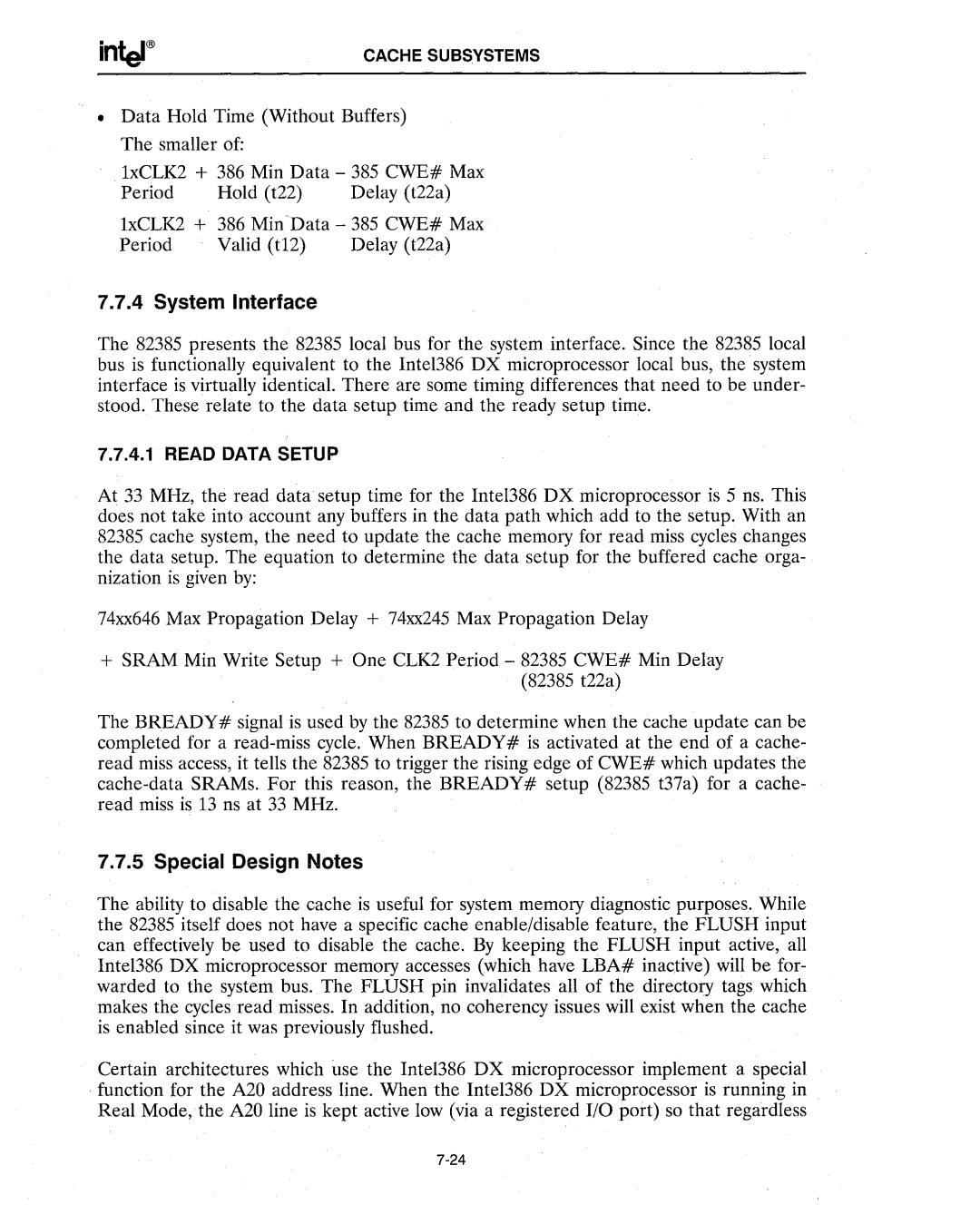
CACHE SUBS,YSTEMS
•Data Hold Time (Without Buffers) The smaller of:
1xCLK2 + 386 Min Data - 385 CWE# Max
Period Hold (t22) Delay (t22a)
1xCLK2 + 386 Min Data - 385 CWE# Max
Period Valid (t12) Delay (t22a)
7.7.4System Interface
The 82385 presents the 82385 local bus for the system interface. Since the 82385 local bus is functionally equivalent to the Intel386 DX microprocessor local bus, the' system interface is virtually identical. There are some timing differences that need to be under- stood. These relate to the data setup time and the ready setup time.
7.7.4.1 READ DATA SETUP
At 33 MHz, the read data setup time for the Inte1386 DX microprocessor is 5 ns. This does not take into account any buffers in the data path which add to the setup~With an 82385 cache system, the need to update the cache memory for read miss cycles changes the data setup. The equation to determine the data setup for the buffered cache orga- nization is given by:
74xx646 Max Propagation Delay + 74xx245 Max Propagation Delay
+SRAM Min Write Setup + One CLK2 Period - 82385 CWE# Min Delay (82385 t22a)
The BREADY# signal is used by the 82385 to determine when the cache update can be completed for a
7.7.5 Special Design Notes
The ability to disable the cache is useful for system memory diagnostic purposes. While the 82385 itself does not have a specific cache enable/disable feature, the FLUSH input can effectively be used to disable the cache. By keeping the FLUSH input active, all Inte1386 DX microprocessor memory accesses (which have LBA# inactive) will be for- warded to the system bus. The FLUSH pin invalidates all of the directory tags which makes the cycles read misses. In addition, no coherency issues will exist when the cache is enabled since it was previously flushed.
Certain architectures which use the Intel386 DX microprocessor implement a special
,function for the A20 address line. When the Intel386 DX microprocessor is running in Real Mode,the A20 line is kept active low (via a registered I/O poit) so that regardless
